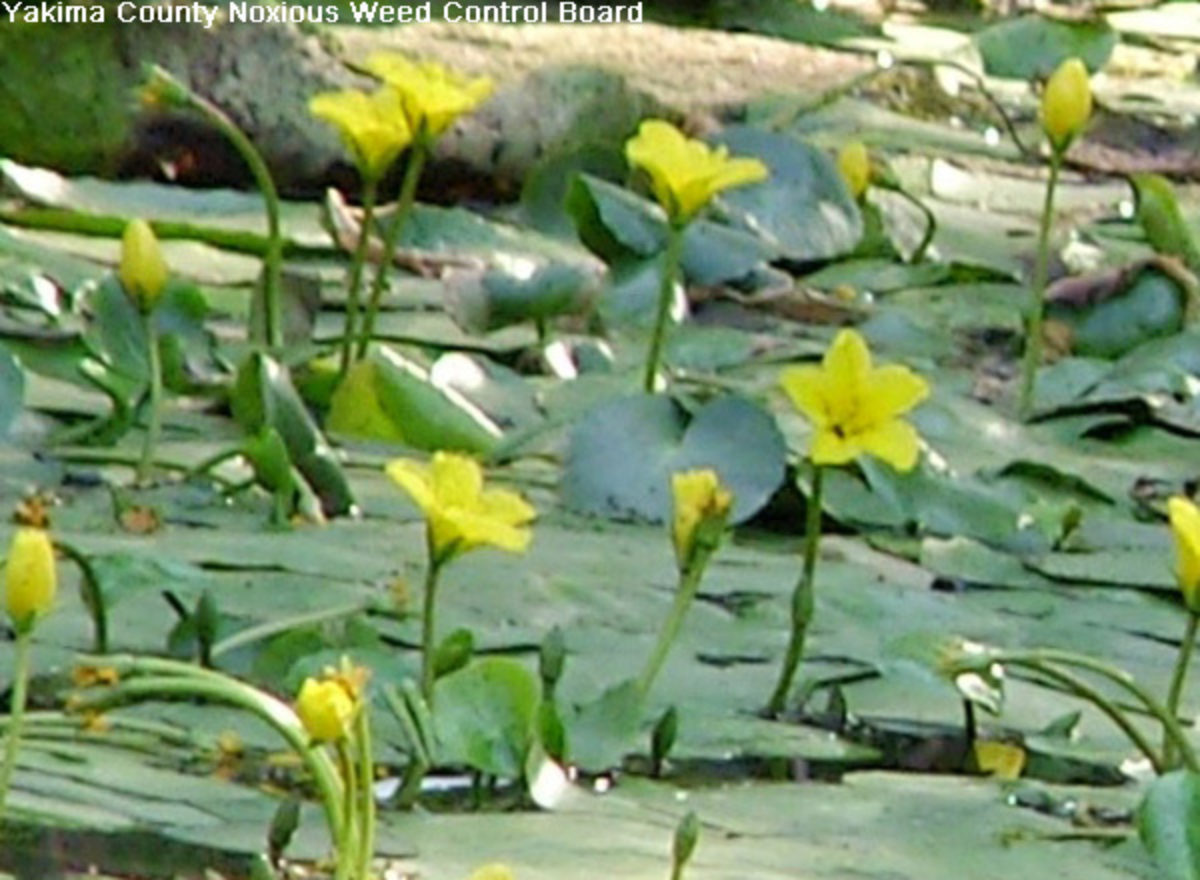Yellow Floating Heart
Nymphoides peltata

Family: Menyanthaceae
Weed class: B
Year Listed: 2001
Native to: Europe and Asia
Is this Weed Toxic?:
not known to be
Legal listings:
WAC 16-752; WSDA Quarantine list (prohibited plant list)
Why Is It a Noxious Weed?
Yellow floating heart is a popular garden ornamental that appears to be an aggressive grower, forming dense mats of vegetation in water. It negatively impacts fish and wildlife habitat, recreation activities and water quality.
How would I identify it?
General Description
It is an aquatic, bottom-rooted perennial with long branched stolons extending up to 3 feet or more and creeping rhizomes. Leaves are on stalks and are floating on the water’s surface. Flowers are on stalks and grow just above the water’s surface.
Flower Description
Flowers are stalked and are solitary or in clusters up to 5. Flowers have 5 sepals, 5 petals and 5 stamens. Petals are yellow and have fringed edges
Leaf description
Leaves are floating, heart shaped, frequently purplish underneath, slightly wavy, and have shallowly scalloped margins. They are alternately arranged on stolons and oppositely arranged on flower stems.
Fruit Seed Description
The fruit is a capsule about 1 inch long and contains numerous flat, oval seeds.
May Be Confused With
Spatterdock, Nuphar polysepala, sometimes is mistaken for yellow floating heart. Spatterdock is a native plant to Washington. If you need help with plant identification, please contact your county noxious weed coordinator.
Where does it grow?
Yellow floating heart is found in slow moving rivers, lakes, reservoirs, ponds and swamps. It can also grow on damp mud. Please click here to see a county level distribution map of yellow floating heart in Washington.
How Does it Reproduce?
Yellow floating heart spreads by seeds and vegetatively by rhizomes, stolons and plant fragments.
How Do I Control It?
Herbicide Control
Use of pesticides in water is regulated in Washington State. All applicators must have an aquatic endorsement on their pesticide applicators license, which is issued by the Washington Department of Agriculture. In addition, coverage under a permit issued by the Department of Ecology is required. See http://www.ecy.wa.gov/programs/wq/pesticides/index.html for details or contact your county noxious weed coordinator.
For More Information
See our Written Findings for more information about yellow floating heart (Nymphoides peltata).
Whatcom County NWCB Fact Sheet on yellow floating heart







